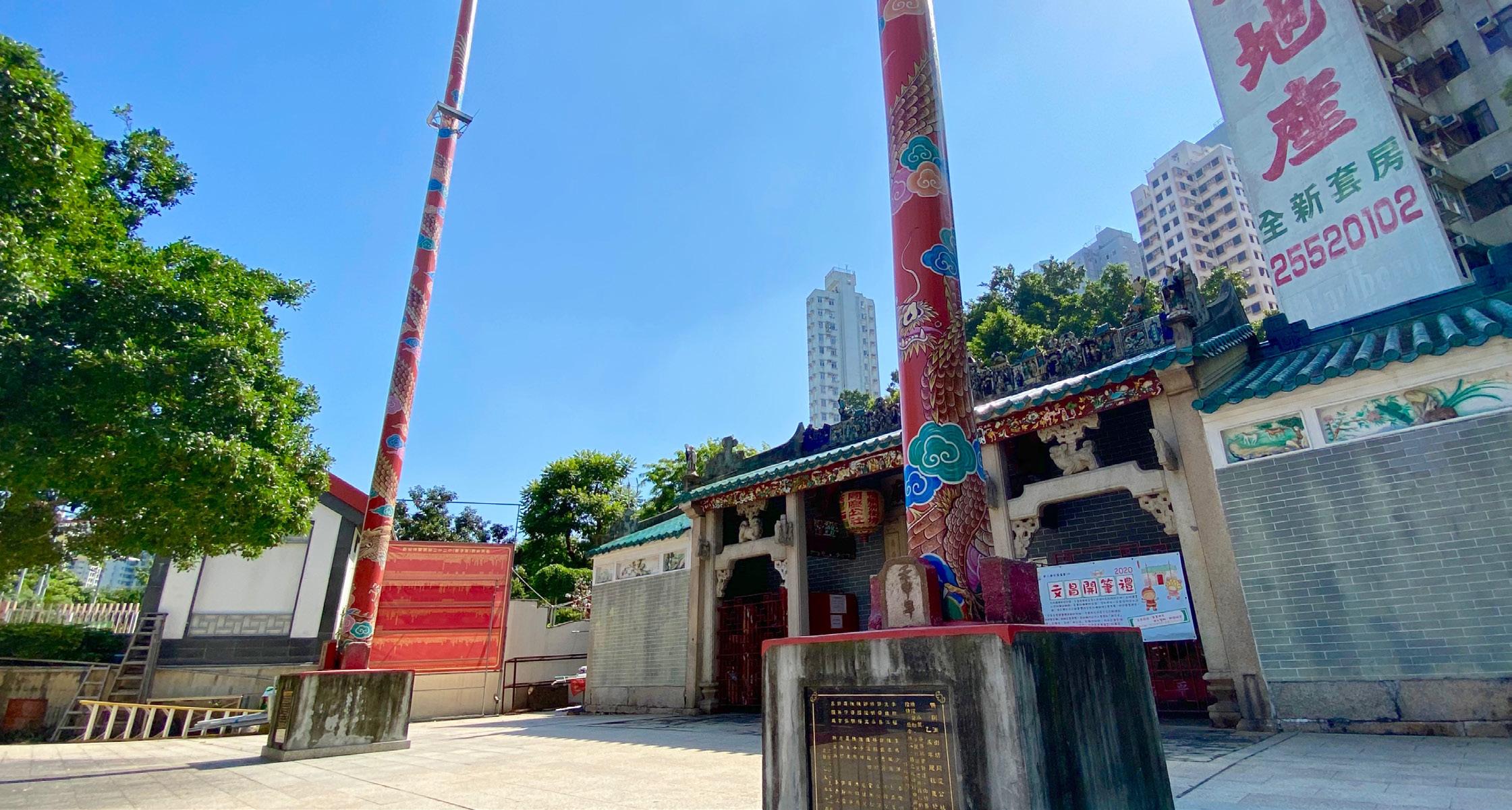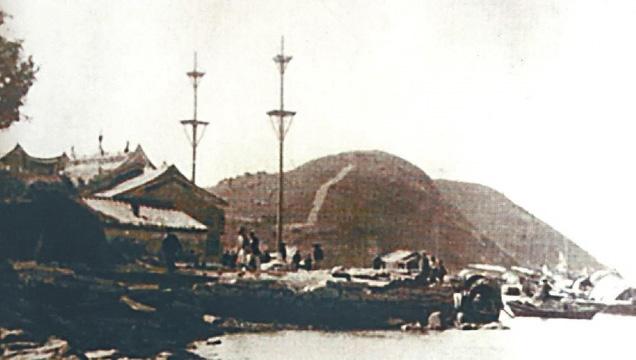
2 minute read
SOUTHSIDE SECRETS
Pillars of the Gods Leanne Hung explores the powers behind the Dragon Pillars in Ap Lei Chau’s Hung Shing Temple
Located on Ap Lei Chau Main Street, Hung Shing Temple has been an important part of the area’s history, with fishermen worshipping deities for protection and fruitful catches since the Ming Dynasty. Among countless Gods and Goddesses, Hung Shing, also known as God of the South Sea, is a deity that was believed to shield fishermen and maritime traders from danger and bless them with rich harvests.
Advertisement
Built over 247 years ago during the Qing Dynasty in 1773, the Hung Shing Temple is a declared first-grade historical monument. While much of its structure has been renovated over the years, its appearance and architectural traits largely remain the same as when it was first built. The temple’s unique structure, supported by five pairs of pillars and two-hall and three-bay layout, is rare to

find in Hong Kong architecture.
Perhaps the most iconic feature of the temple, is a pair of pillars rooted outside the entrance. Dubbed as Dinghai Shenzhen (loosely translated to divine pointers that pacify the sea), the pillars, decorated with dragons are believed to be intertwined with supernatural powers and play a huge part in Ap Lei Chau’s colonial history.
In 1891, the colonial government established a police station in Aberdeen as a way to surveillance and monitor Ap Lei Chau. After Feng Shui masters determined that there was “sha qi” (a noxious aura) from the police station, residents decided to build the pillars as a means of self-defence against colonists. The pillars were believed to protect residents from outsiders and maintain the area’s harmony and peace.
Slowly tales of the pillars were passed down by older generations: In the past Main Street’s housing structures mainly consisted of wood, including the pillars. Legend believes that a fire once broke out on the street and spread quickly. Many houses and even the temple were damaged, yet the pillars remained standing and unburnt. Residents believed that this was a sign that the pillars contained divine powers.
Sadly one of the pillars was blown apart by typhoon Kalmaegi in 2014. At the time, residents and Feng Shui professionals were concerned, as the pillar’s collapse seemed to be an ominous warning that the stability and peace of Hong Kong may be disturbed. The broken pillar has since been re-erected and both of the pillars were replaced with stronger materials in 2015. This is not to say their powers are gone, as ceremonies continue to be performed before them and people continue to view them as divine structures guarding the safety of the area.
The Hung Shing Temple and the dragon pillars are some of Main Street’s most valuable cultural attributes and are an essential part of the neighbourhood’s history. Whether you believe in their powers or not, it must be recognised that they bear a rich and significant value to the colonial history of Hong Kong and residents are proud to have a building with such long standing and importance in the community. The temple and its pillars bear witness to the amalgamation of the past and present, holding dear to people’s hearts and protecting the civilians of Ap Lei Chau and Hong Kong as a timeless asset throughout the history and development of the city.







